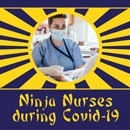School nurses will prove pivotal as children return to the classroom

 The debate on if it is safe enough for our school-aged children in reception, year 1 and 6, to return to school or not this week, has reached new heights in the past days with conflicting views from our Government to those held by the majority of teachers unions, the independent SAGE committee, the Association of Directors of Public Health, a number of local authorities and, importantly many parents.
The debate on if it is safe enough for our school-aged children in reception, year 1 and 6, to return to school or not this week, has reached new heights in the past days with conflicting views from our Government to those held by the majority of teachers unions, the independent SAGE committee, the Association of Directors of Public Health, a number of local authorities and, importantly many parents.
Related Article: Funded nurse workforce plan needed for neighbourhood health services
Of course, many schools have remained open throughout the lockdown period and with the support of their school nursing service, have already put into place numerous strategies that have and will continue to assist in the safest return to school as possible for students.
Examples of this include:
- hand and respiratory hygiene health education, signposting to resources and advising on facilities;
- social distancing measures, supporting and advising on health and safety measures using emotionally intelligent approaches ranging from outdoor play to school meals;
- supporting trauma-informed practice through education, signposting and promotion of ‘mentally healthy schools’ modeling;
- anxiety reduction techniques/resources and practices for individuals, parents, children and, indeed, for many of our school staff colleagues!
Alongside this, school nurses have been supporting our most vulnerable students both in and out of school and, in doing so, have identified and supported a worrying increase in child protection and mental health issues.
Related Article: Nurse had to ‘freeze’ PPE during pandemic to re-use in care home, Covid inquiry hears
The evidence from national helplines serve to confirm our worst fears in that this is likely only the tip of the iceberg. For example, Childline has reported that almost 7,000 counselling sessions about coronavirus have taken place with children and young people since the start of January. So, we are also working with schools and chldren’s services to better understand how we as a children’s workforce can and must prepare to help our children tell their stories and to seek and receive help.
We also know that few children are presenting at GPs for usual childhood ailments and illnesses nor are they attending routine hospital follow-up appointment for long-term medical conditions such as asthma and diabetes. We therefore anticipate that schools and school nurses will also have a key role in helping these children and families to access services once again in order to achieve optimum health, well-being, and, in turn, attendance and attainment.
Related Article: More nursing apprenticeships and changes to student travel expenses
School nurses have been and will remain pivotal to the recovery of our students. It is going to be (another) a busy time.

See how our symptom tool can help you make better sense of patient presentations
Click here to search a symptom


The debate on if it is safe enough for our school-aged children in reception, year 1 and 6, to return to school or not this week, has reached new heights in the past days.



